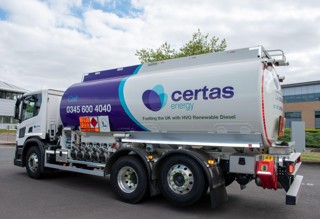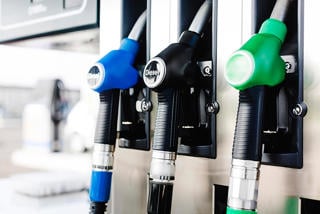The pressure on all retailers for share of wallet is constant and the fuel sector is no different.
How do you maintain your loyal customers and attract new ones? Some marketers suggest that payments are the 5th “P”. I am not qualified as a theoretician, but, as a 20-year practitioner, I do think that there is some merit in this view.
Payment solutions clearly straddle product, promotion and price – 3 “Ps” that they impact on – while functioning as drivers of customer choice and loyalty.
If we work on the assumption that payment solutions are the 5th “P” of the marketing mix, how will they evolve and how will fuel cards feature in this change?
There are more and more payment types in the market place, including (amongst others) biometrics, wearable devices, contactless and mobile.
Personally, I’m not sure the payment methodology itself really matters: research shows us that what is important is the customer experience and what the customer really wants.
Doug Stephens, founder of Retail Prophets, suggests: “We will see more disruption in the next 10 years of retail than we did in the previous 1,000”. He also goes on to suggest that one of the key changes will be a considerable increase in payments transparency.
If you agree with Doug’s thesis, then what might a future look like, in which payments are ultimately transparent?
If payments are to be truly transparent then customer recognition should feature heavily.
Paying with your finger, an embedded chip or your mobile phone, offers a retailer or issuer the opportunity to seamlessly bring together the facilitation of a payment (mechanics) with deep-seated insight into the business customer or consumer making it (understanding).
The goal for any retailer or issuer here is a dynamic understanding of the purchasing behaviour, capacity and patterns of a customer or a business. To achieve such valuable and dynamic insight, real time data is indispensable.
Essentially, real time credit, purchase pattern and buying preference information contained in a solution that allows the retailer and / or issuer to maximise acceptance and grow sales – at low risk.
Maximising Acceptance
When we look at maximising acceptance and making payments transparent, there are two areas where more effective technology is needed:
“Know Your Customer” - as businesses or as individuals our purchasing capacity is a subset of a data footprint, which is why marketing departments are clamouring for strong data sources.
In terms of the fuel card market, that business purchasing capacity is assessed by credit functions. On successfully satisfying specific “Know Your Customer” (KYC) criteria, a business customer is provided with a fuel card and a credit line.
The KYC process is straightforward for mature businesses, but has proved complex, time-consuming and expensive to implement for smaller operations.
That does not mean, however, that there are no issues for larger and more mature businesses, there are. Does “Know Your Customer” data-driven insight run deep enough and is its scope broad enough to cover a business 360o? Or is it no more than a limited subset of the overall back office?
So, if the fuel retailing and payments sectors are serious about supporting government policy and helping new and growing small businesses, more advanced KYC capabilities need to be leveraged to grow share and minimise risk.
Failing that, post-paid solutions must be replaced by pre-paid ones. Considerable growth opportunities therefore exist for suppliers capable of engineering a genuine local value proposition for small businesses, centred on site or site-group specific rebating and the inclusion of other local vehicle-related services.
Ongoing Customer Recognition - right now, an issuer’s or a retailer’s customer insight is usually little more than a transactional snapshot.
Continuous, dynamic and predictive recognition is simultaneously the next challenge and the greatest opportunity. Managing and understanding purchasing capacity, behavioural typology and buying dynamism - and then making sure that insight is linked back to the individual making the purchase - “marrying the individual with the transaction”.
Payment Transparency
If this logic holds true, then surely it is safe to say that if we “Know our Customer” extremely well, then we could automate payment once the checkout process was completed, using technology like facial recognition.
Payment terminals fitted with cameras to triangulate the location, the payment and the individual.
In the case of the fuel card market, it doesn’t take a great leap to see vehicle recognition, as well as customer recognition, playing a part in the future for payments.
In such a scenario (already played out in markets such as Israel, Turkey and the Gulf states), the vehicle becomes the payment device, with some manufacturers already piloting these types of technologies. It would not take too much to link a payment solution to a speed camera.
If you accept that in the future every payment will be linked back to you and back to the point of sale, then payments could become completely transparent.
If the retailer or issuer knew your purchasing capacity, behaviour and preferences - they could then effortlessly use individually targeted promotions or rebates to maximise share of wallet. Maybe price labels will be removed from shelf edges and point of sale, as the retailer and issuer will already understand your purchasing power and intent.
My view is that this scenario will probably play out more rapidly within a closed loop scheme, where issuers have greater control over all elements of the transaction flow and the entire payments value chain.
That inevitably brings us back to my point about the retailer’s and issuer’s goals of maximising share of wallet. As fuel cards are a great case for “early adoption”, then you can look forward to some exciting opportunities to innovate in and capitalise on via payment transparency, and to the maximisation of both acceptance and share.
By Dr. Mark Goldspink, chief executive The ai Corporation.


















Login to comment
Comments
No comments have been made yet.